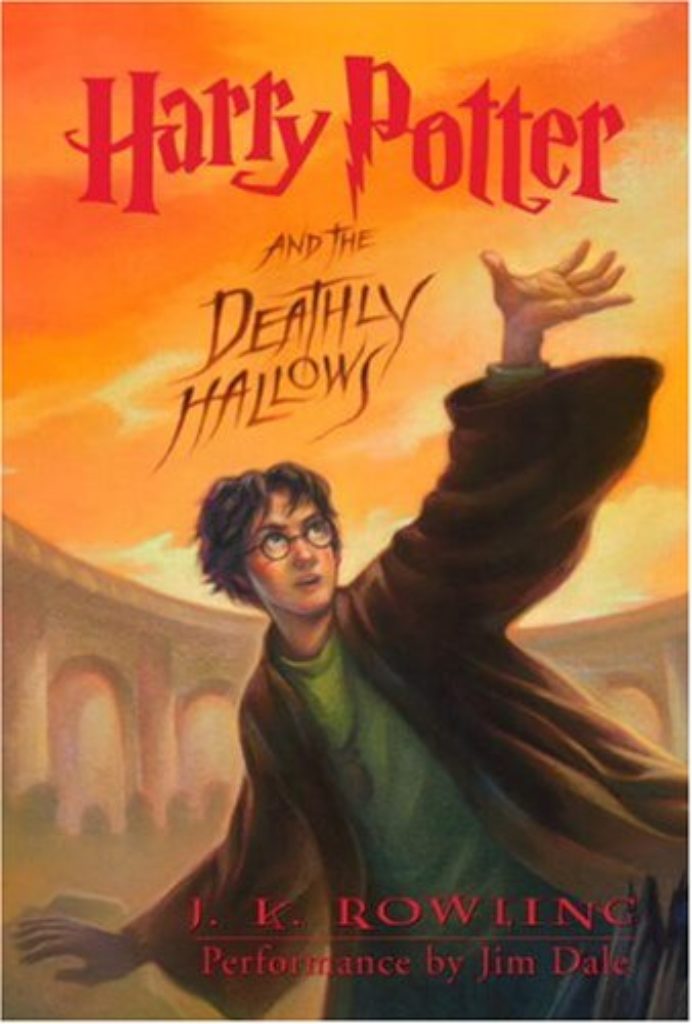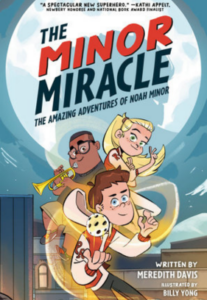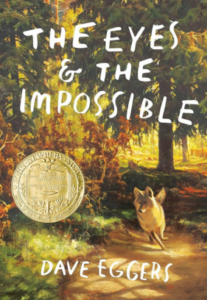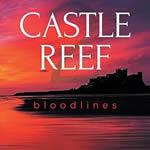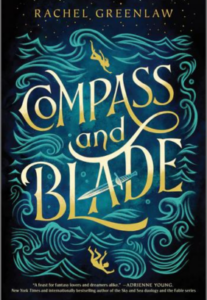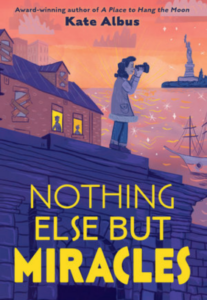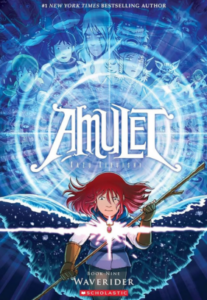From the outset, Harry Potter and the Deathly Hallows moves at breakneck speed. Author J.K. Rowling clambers to tie up loose ends left dangling from the previous six books, creating a final novel with a dark mood and somewhat convoluted story.
It’s a tale of war, and as such, it’s fairly joyless. Though well-crafted and imaginative, it may give readers the sensation of trying to sip water from a fire hydrant as they’re blasted with complex revelations and details in every chapter, with few of Rowling’s characteristic lighthearted “resting places” in between.
As usual, Harry begins by saying goodbye to Privet Drive—this time for good. When he comes of age at midnight, the protective charm provided by his mother’s sacrifice will break, leaving him vulnerable to a Death Eater plot to kidnap him. With help from the Order of the Phoenix and his school friends, he escapes, but not without casualties on both sides. During the fray, Voldemort appears and discovers that he needs a stronger wand to defeat and kill the boy. This begins the Dark Lord’s search for the legendary Elder Wand, an unbeatable weapon with a bloody history. To win its allegiance, a wizard must kill its owner.
At the Burrow, now protected by magical spells placed upon it by the Ministry of Magic, Harry, Ron and Hermione plan to set out in search of those remaining little bits of Voldemort’s mangled soul, the Horcruxes. During Bill and Fleur’s wedding, word arrives that the Ministry has fallen under Death Eater control, and a new era is born. The protective charm around the Burrow breaks, and Harry, Ron and Hermione escape to start a new life on the run.
From here, the bulk of the story surrounds the three main characters staying a step ahead of Death Eaters and camping out in a magically protected tent wherever the Horcrux trail leads. Their search is frustratingly difficult. Tempers run high. Harry is plagued by visions of Voldemort torturing and killing people. And Hermione spends her time poring over a book Dumbledore left her in his will.
Her research leads the trio to The Tale of the Three Brothers. According to this myth, three brothers cheated Death and were rewarded with three magical objects: The Elder Wand, The Resurrection Stone and The Cloak of Invisibility. These Deathly Hallows, if united, would make the possessor master over death. Harry becomes consumed with finding them, much to Ron and Hermione’s dismay. Already owning The Cloak, his greatest desire is for the stone and its power to bring back the dead.
His pride and recklessness lead Death Eaters to their door, and the three friends are taken to Malfoy’s mansion. Hermione’s torture there by Bellatrix LeStrange and their narrow escape from death finally convince Harry to forget about the Hallows and focus on their original mission of destroying Horcruxes.
So the crusaders race to Hogwarts to locate one of the remaining four soul fragments. Once there, they reunite with old comrades from Dumbledore’s Army, now outcasts living in The Room of Requirement. As Harry searches the castle for the Horcrux, Death Eaters alert Voldemort to his presence, and the final battle begins. Then it’s like old home week at Hogwarts with every character and creature from the entire series arriving to join in the fight. By the time Harry has his showdown with Voldemort, only two Horcruxes stand between the Dark Lord and death—one of which also holds the key to Harry’s destiny.
Positive Elements
What Rowling has done well in the past, she continues to do well in Deathly Hallows. Excellent character development leaves no doubt as to the value of nobility and morality. Lines between good and evil are clear (though the heroic portrayal of spells and incantations remains a problem). Cruelty reflects the evil nature of those who use it, and life is assigned value, even in the cases of the most unlovely beings. In fact, when a house-elf gives his life to save Harry, the boy digs the grave himself without magic, believing that this honors the sacrifice in a deeper way.
Themes of true friendship and self-sacrifice are touchingly developed. Harry, Ron and Hermione are nearing adulthood, and their relationships reflect this. Trying to convince Ron and Hermione to stay behind in safety, Harry finds his two friends determined to help him fight Voldemort. Ron and Hermione’s romantic relationship blossoms to genuine love. And it does so without any inappropriate sexuality.
Reflecting on Harry’s godfather’s treatment of the venomous house-elf Kreacher, Hermione warns Harry to learn from Sirius’ mistakes (“I’ve said all along that wizards would pay for how they treat house-elves”). Harry takes her words to heart and eventually inspires in Kreacher the same loyalty that Dumbledore inspired in Hagrid. At being treated kindly, Kreacher’s entire demeanor and even his appearance change for the better. Conversely, Harry’s dishonesty with a goblin who respects him leads that being to turn on him at a crucial moment.
Throughout the Potter series, pride and hunger for power go hand in hand and almost always accompany evil, even in the noblest of characters. So it is in Deathly Hallows. Imagery of peacocks on the walls of Voldemort’s hideout reflects his over-confident belief in his being the most powerful and wisest wizard, a failing that often blinds him. Harry, carrying a Horcrux close to his heart for safekeeping, absorbs some of this arrogance. His resulting obsession with finding the Hallows costs him dearly, and provides a solid life lesson.
Perhaps the most poignant elements of this story surround Voldemort’s quest for a pure-blood wizarding society. The parallels here to Nazi Germany and the Holocaust are profound. Readers familiar with that period in history will shudder when Harry and his friends enter the Ministry to find the golden fountain replaced by a gigantic black statue of a witch and wizard. Carved on the thrones that support them are mounds of human bodies, man, woman and child, their faces grotesquely twisted.
Further, Harry and Hermione witness “trials” of accused Muggle-borns who are summarily convicted and packed off to Azkaban in the care of dementors. Throughout the story, pure-blood wizards risk their lives to hide and protect “undesirables” targeted by the Ministry. Several broadcast an underground radio program, both to boost the spirits of the oppressed and to encourage supporters to protect Muggles and Muggle-borns from tyranny.
Another overarching theme is the need for trust. Who will Harry trust? Who will influence him? With Dumbledore dead, journalist Rita Skeeter publishes a scathing biography containing many half-truths about the old headmaster. Hurt and confused, Harry must choose what to believe. He must develop faith in those who have been loyal in the past and allow them to help him (“He had made his choice … to accept that he had not been told everything that he wanted to know, but simply to trust. He had no desire to doubt again”). In contrast, Voldemort trusts no one, not even those closest to him (“It had been a grave mistake to trust Bellatrix and Malfoy. Didn’t their stupidity and carelessness prove how unwise it was ever to trust?”).
Crude or Profane Language
Obscenities and profanities are sprinkled in a bit more heavily than in previous installments. Characters on both sides of the war use “d n,” “h ,” “b ch,” “bleedin'” and “effing.” Crudities and slang (“rat’s fart,” “snogging,” “bogies,” etc.) show up occasionally as well.
Alcohol Abuse
Following the death of a friend, Harry drinks firewhiskey, which dispels his numbness and “fires him with something that was like courage.” Later it is implied that he has “too much food and wine.”
Sexual Subjects
While not explicitly sexual, the werewolf Fehnrir Greyback makes disturbing, sensual comments when presented with the chance to devour Hermione. There’s kissing between young couples in love.
The Final Battles
Violence peppers almost every chapter of Deathly Hallows. And some of the imagery would do Stephen King proud, particularly in the case of Bathilda Bagshot, a neighbor of Harry’s parents in Godric’s Hollow. Rotting flesh and snake attacks, along with Inferi (dead bodies bewitched to do Voldemort’s bidding), are equal to and sometimes surpass the grotesque pictures Rowling conjured in The Half-Blood Prince.
She promised her readers a story of war against pure evil. Resultantly, this book is fraught with injury and death. More than a few characters—some of them beloved by fans—die. One is “splinched,” his flesh ripped away during disapparation. Another takes a curse to the side of the head and loses an ear. Others burst into flame or strangle themselves. Voldemort and his followers torture the innocent and kill a pleading, helpless woman within the first dozen pages. And through Harry’s mental connection to Voldemort, he is often forced to witness the Dark Lord’s sadistic tactics, even reliving the murders of his own parents as though he were committing them.
Death … And Worse
In several places, Harry contemplates the “peace” of giving up. Standing at his parents’ graves in Godric’s Hollow, he “looks down at the thick snow hiding from his eyes the place where the last of Lily and James lay … not knowing that their son stood so near, his heart still beating … and close to wishing, at this moment, that he was sleeping under the snow with them.” On other pages, Harry longs for “the oncoming oblivion, the promise of nothing, of no feeling.” When his final battle with Voldemort commences, his most pressing question of the dead souls surrounding him is “Does it hurt?” to which one replies, “Dying? Not at all … Quicker and easier than falling asleep.”
Rowling also spends a fair amount of time communicating that there are things far worse than death—Voldemort’s cowardly, loveless subsistence, for example. In fact, death is characterized as a brave and a peaceful existence. A belief that may be what smoothes the way for a description of an elderly man’s “mercy killing.” Certainly, without the additional explanation of salvation through Christ and the heavenly afterlife that provides, this view is disconcerting and may prove oddly tempting to some readers.
Still, despite such musings and enticements, it could be argued that, on the whole, the book is more often respectful of life, as noted above in “Positive Elements.” When Harry is faced with his supposed demise, he reflects on what a treasure his own body is (“Why had he never appreciated what a miracle he was, brain and nerve and bounding heart? It would all be gone … or at least, he would be gone from it”).
Spirituality
The visual imagery of magic, of course, continues to be Harry Potter’s primary problem. Because this book is so dark and its themes so sobering, everything seems more intensely real. As Ron, Harry and Hermione fight to remain hidden, they continually summon the benefits of spells to conceal themselves. Each time their tent is erected they encircle the area mumbling protective incantations and drawing shapes around the campsite with their wands. Partly because of the setting and partly because of the descriptions, their actions here feel quite different from reading about turning buttons into beetles as they’re first learning magic in the early books.
In Rowling’s world, characters embrace many of the same values Christians in the real world espouse. But as Harry, Ron and Hermione struggle to choose between right and wrong, and sort out grey areas, it is the human heart that decides, rather than any divine authority or maxim. Still,Deathly Hallows has a feel for spirituality that comes across as very believable at times. It is even sprinkled with Scripture. For example, the tomb of a wizard family is inscribed with words found in Matthew 6:21: “Where your treasure is, there will your heart be also.” Harry doesn’t understand these words, nor does he understand what he finds on his own parents’ tomb: “The last enemy that shall be destroyed is death.” So it appears that Rowling grasps the peace and beauty of these concepts, but chooses not to identify the Author.
Herein lies the difficulty with her constructs of death and soul. We are offered the stirring love and self-sacrifice of a young man willing to die for his friends, as well as the promise of peaceful release in the afterlife. But there’s no truth of salvation to undergird it.
It almost goes without saying, then, that God is absent once again, most conspicuously in this case because Rowling spends so much time expounding on the soul. In her architecture, The Resurrection Stone can be used to bring back the dead from what we are led to believe is peace. They do not want to come back, and it is seen as selfish to force them to. Harry uses the stone before his battle with Voldemort, recalling the souls of those closest to him. They are “less substantial than living bodies, but much more than ghosts.”
As he travels toward what he believes will be certain death, these souls become more real to him than the living and he feels no regret for calling them. They are calm, lovely, completely at peace, and they serve as sources of comfort and encouragement. We get a glimpse of their state of being later when a renewed Dumbledore comes to Harry and expresses tears of regret over his own life decisions. (So perhaps the afterlife isn’ttotal bliss.)
In using Horcruxes, Voldemort has chosen what to do with his soul. And in the end, Harry can do the same. Either he may “go on” from the in-between place in which he lands after Voldemort’s attack, or he may go back to finish the fight. The choice is his (though how Dumbledore knows to tell him this and how he entered Harry’s limbo is anyone’s guess). The fact that Harry has that option at all is no more than a convergence of badly done magic and poor choices on Voldemort’s part. And that means Harry has no discernable, immovable Mover in whom he can place his trust as he careens toward death.
If he has a god, it must be Dumbledore, but that does not seem entirely right either. The ins and out of all this end up generating so much confusion it’s almost as if we’re watching Vizzini in The Princess Bride cackle, “I can clearly not choose the wine in front of me!”
Conclusion
As confusing and troubling as it may seem to have a lightning bolt-branded boy-wizard as a Christ figure, J.K. Rowling tries to create one in Harry. But while he is “savior,” he is also He-Who-Must-Be-Saved. Harry Potter and the Deathly Hallows conjures a world that practically begs for something to have faith in.
Rowling’s mythology is closest in construction to that of J.R.R. Tolkein and C.S. Lewis, but it doesn’t give evidence of godly faith in any of the ways their stories do. Time columnist Lev Grossman noticed this when he wrote, “If you want to know who dies in Harry Potter, the answer is easy: God. Harry Potter lives in a world free of any religion or spirituality of any kind. He lives surrounded by ghosts but has no one to pray to, even if he were so inclined, which he isn’t. … What does Harry have instead of God? Rowling’s answer, at once glib and profound, is that Harry’s power comes from love. This charming notion represents a cultural sea change. In the new millennium, magic comes not from God or nature or anything grander or more mystical than a mere human emotion. In choosing Rowling as the reigning dreamer of our era, we have chosen a writer who dreams of a secular, bureaucratized, all-too-human sorcery, in which psychology and technology have superseded the sacred.”
There is no doubt that J.K. Rowling will be remembered as one of the most well-read writers of our age. She will also be remembered for ignoring the simple truth of a very old—and sacred—text: We love because He first loved us.



